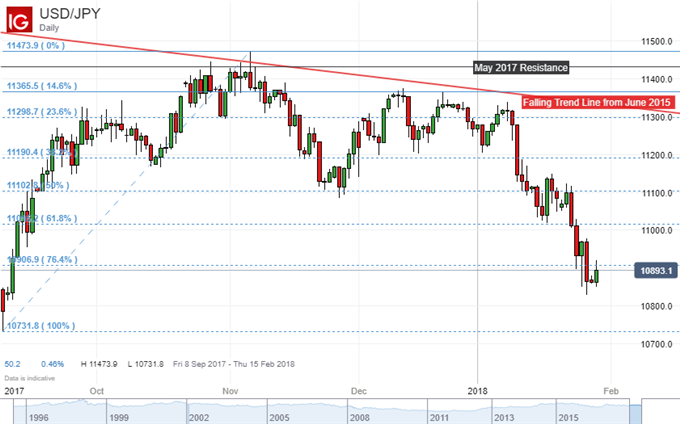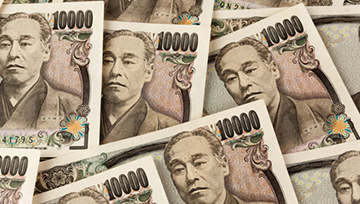Talking Points:
- Japan’s jobless rate unexpectedly rose to 2.8% from 2.7% as labor force participation declined
- The Japanese Yen took a slight hit versus its major peers ahead of the Tokyo Stock Exchange open
- Even so, unemployment remains at 1994 lows and the BoJ’s focus is hitting the elusive CPI target
See how the Japanese Yen is viewed by the trading community at the DailyFX Sentiment Page.
The Japanese Yen took a relatively small hit against its major counterparts ahead of the Tokyo Stock Exchange market open. The selling occurred as Japan’s employment statistics for December 2017 was released, and it wasn’t all that great from a short-term perspective.
Japan’s jobless rate rose unexpectedly from 2.7% to 2.8%. Economists were pricing in that it would hold steady. Accompanying that was a decline in the labor force participation rate from 60.6% to 60.5%, this was the lowest outcome since April 2017. There was a bright side though, the job-to-applicant ratio rose to 1.59 instead of to 1.57 as forecasted from 1.56.
From a long-term perspective, Japan’s unemployment rate is still at its lowest point since 1994 and the labor force participation rate is recovering from 2012 lows. With that in mind, as outlined in their most recent monetary policy announcement, the Bank of Japan forecasted consumer price inflation hitting 2% around fiscal year 2019/2020. But will labor force data still be strong by then?

On a daily chart, the Japanese Yen has been gaining ground against its US counterpart after trading sideways more or less since mid-September 2017. USD/JPY was unable to break above a long term falling resistance line from June 2015 during this time.
The pair recently fell through the 76.4% Fibonacci retracement level at 109.06, and has since been stuck around it. A continuation of Japanese Yen strength might see the pair testing the 107.31 low on September 8th. More selling pressure will expose the 61.8% level around 110.15.
Keep an eye on the intraday IG client sentiment reading for USD/JPY. It now shows that traders are further net-long and that the recent changes gives a stronger bearish contrarian trading bias. This might mean USD/JPY could continue to fall.







